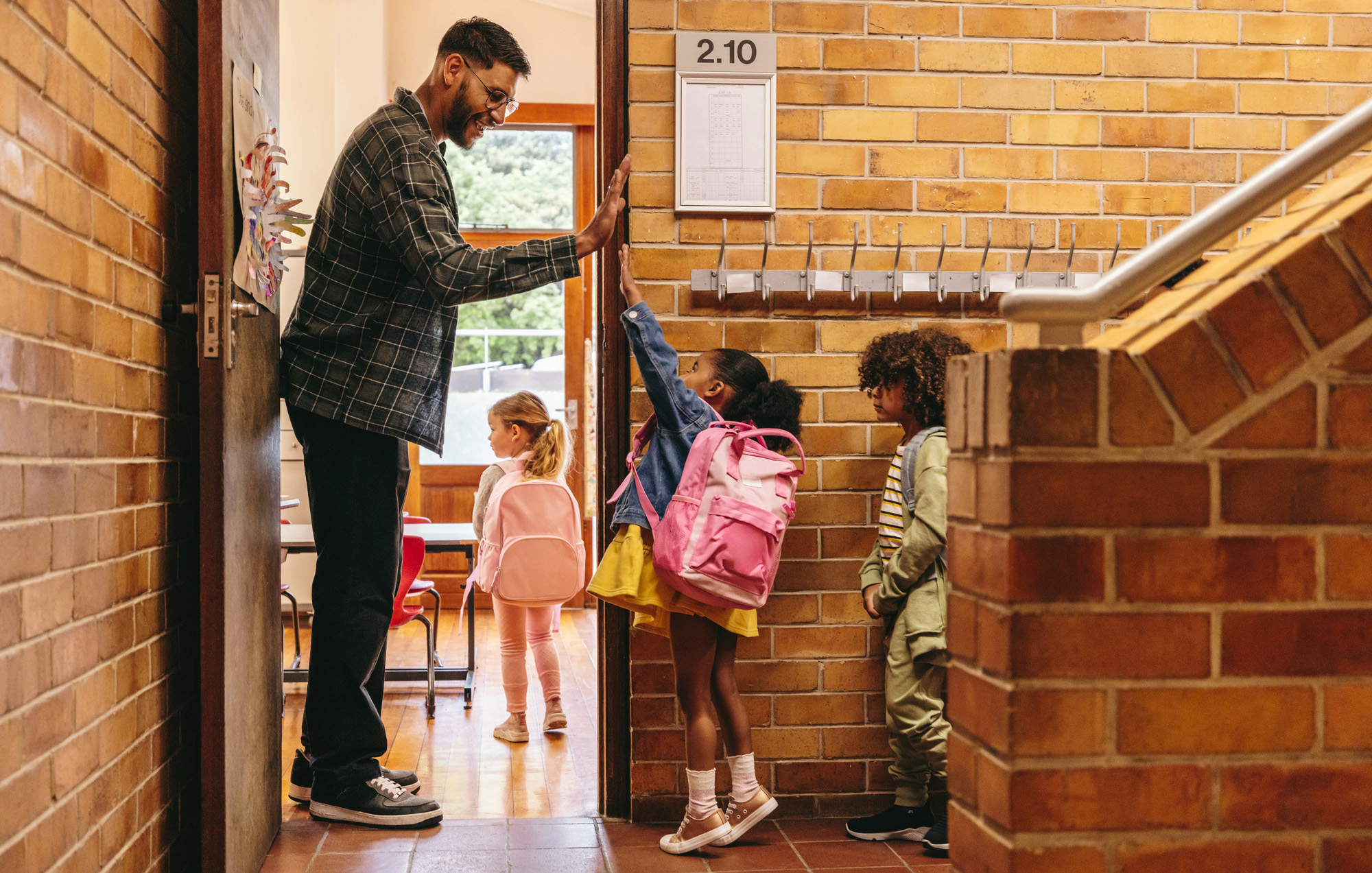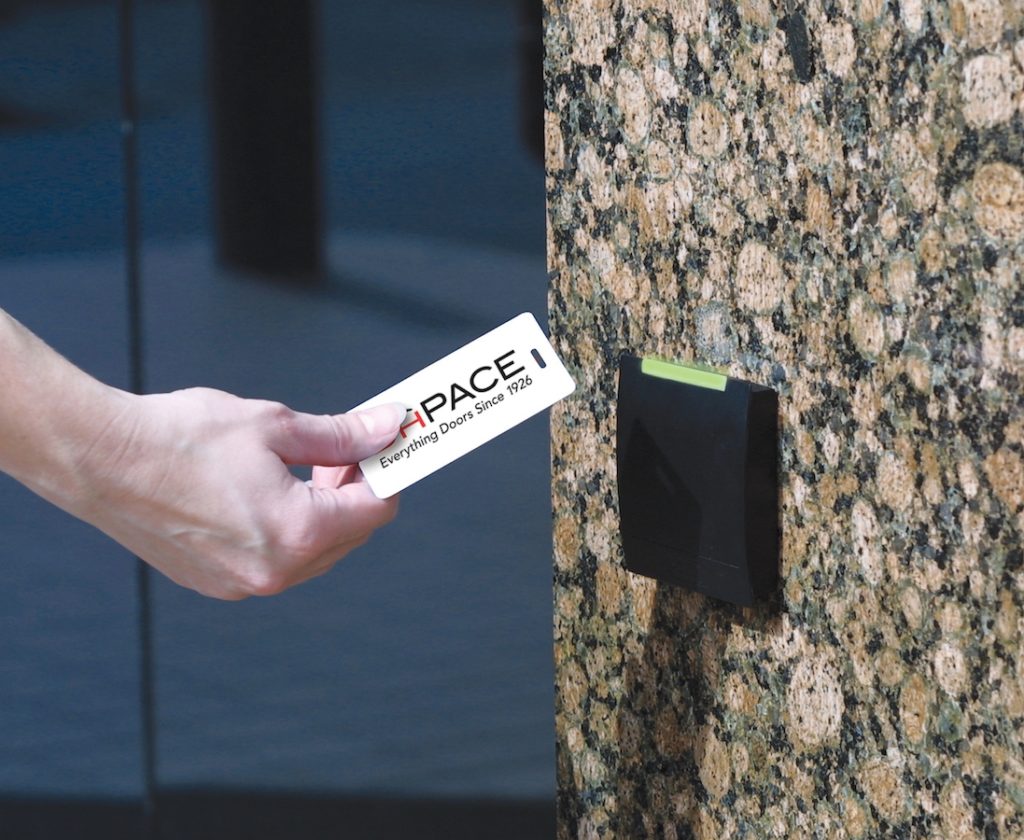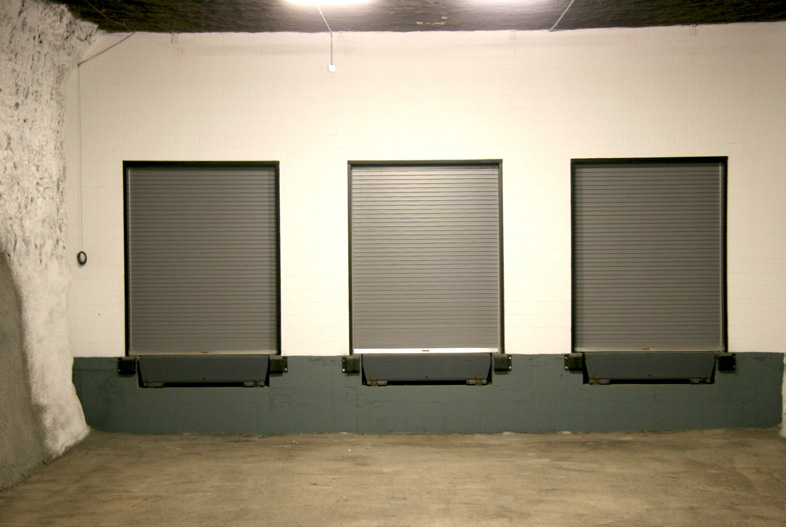01.21.2025
Classroom Security Gets a Code Change

A secondary locking device on classroom doors is now approved by the Life Safety Code, NFPA 101. While there are specific requirements that must be met, such as applying only to existing doors in K-12 schools, the change provides a sensible and economical method to safely lock classroom doors during emergencies or lockdowns.
NFPA 101 Secondary Lock Code Change
NFPA 101 2018, and any newer editions, now permits two motions to lock and/or unlock a door provided both motions do not have to be performed simultaneously. This code change, for existing K-12 classroom doors only, provides a reasonable, practical, cost-effective, and safe means of locking classroom doors under lockdown (e.g. targeted violence) scenarios.
New construction installations and/or door replacements in K-12 will continue to require “single motion” to egress. Classrooms in other learning facilities such as colleges and universities, which are deemed Business occupancies per NFPA 101, are not covered in this code change.
IBC/IFC Requirements for Lock Installation
Currently the secondary locking device with “two non-simultaneous releasing operation” method is not compliant with the International Building Code (IBC) and the International Fire Code (IFC). IBC/IFC requirements related to the product installations displayed later in this document include the following criteria regardless of the product/locking method chosen:
- Must be lockable from inside the classroom without having to open the door
- Cannot require special knowledge, a key, or tool to engage or disengage from inside the classroom
- Must not be two simultaneous motions to unlock
- Lock(s) installed between 34 – 48 inches above the floor
- Must have ability to unlock from hallway side with a key or credential
- Staff must be trained and drilled on the locking and unlocking method
Recommended Classroom Locks
DH Pace recommends the following types of classroom locks. In order of priority: (1) use of integrated lock and deadbolt in compliance with IBC/IFC, (2) use of non-integrated lock and deadbolt per the new NFPA 101 approval. In this instance you will need to consult with your local code official and obtain written approval for the secondary non-integrated locking device since it does not comply with IBC/IFC standards. ADA compliance and field modifications restriction also still apply.
Non-code compliant temporary barricade devices, even if approved by local code officials, are never recommended and DH Pace will not install them due to the risks to life safety of everyone inside the classroom.
Recommended Options for Classroom Secondary Locking Devices
When adding a secondary locking device to an existing K-12 classroom door, the following recommended options will be determined by the end user’s existing lock hardware, key system being used (as the new lock will need to be keyed under the School Master Key System), and whether it is an interior door and/or exterior door.
Interior Classroom Door Options
- Grade 2 Single Cylinder Deadbolt with Thumbturn (ADA compliant) with a 2-3/8” to 2-3/4” adjustable backset for 1-3/8” to 1-3/4” thick door. All keying options are available which include Conventional Standard Cylinder, Full-Size Interchangeable Core (FSIC) Cylinder, Large Format Interchangeable Core (LFIC), and Small Format Interchangeable Core (SFIC) Cylinder.

Exterior Classroom Door Options
- Grade 1 Single Cylinder Deadbolt with Thumbturn (ADA compliant) and a 2-3/4” backset for a 1-3/4” thick door (2-3/8” backset is available). All keying options are available which include Conventional Standard Cylinder, Full-Size Interchangeable Core (FSIC) Cylinder, Large Format Interchangeable Core (LFIC), and Small Format Interchangeable Core (SFIC) Cylinder.

(Grade 1 Single Cylinder Deadbolts with Thumbturns can also be used on interior classroom doors that are 1-3/4” thick. The backset will need to be specified.)
Please Note: Residential grade deadbolts are never recommended as in most cases they cannot be keyed into the School Master Key System.
There are many options, requirements, and compliance codes to consider before selecting the best classroom lock for your school. DH Pace’s door experts are well-versed in all of these aspects. Contact your local DH Pace office for more information and a free estimate.



